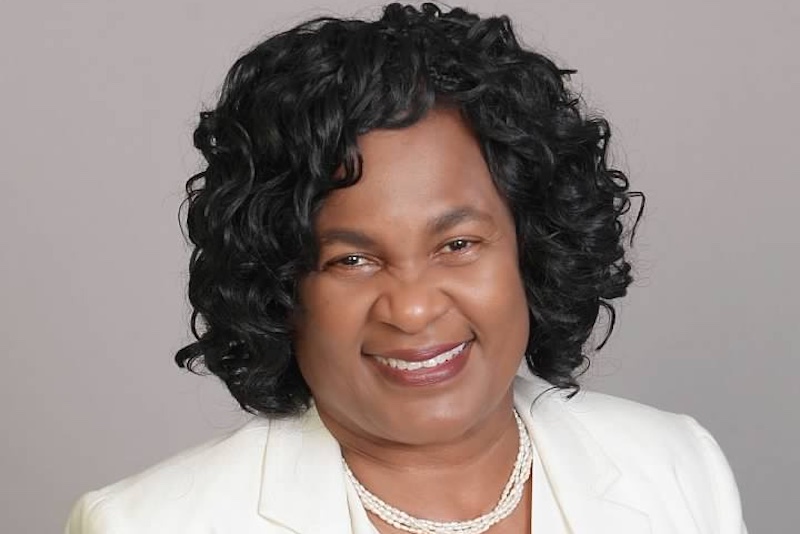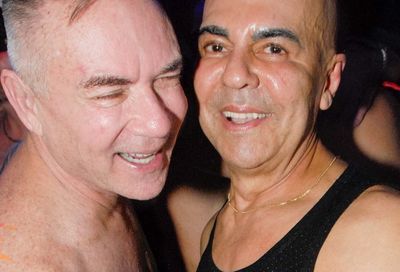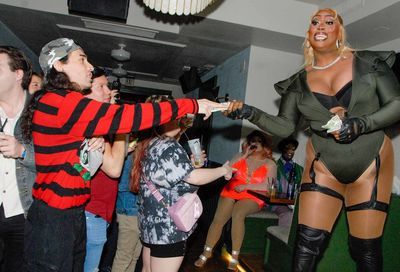Report shows 9th consecutive year of decrease in new DC HIV infections
Annual report on infectious diseases shows there's still a high incidence of HIV in Wards 2, 5, 7 and 8

The number of newly diagnosed HIV cases in Washington, D.C. has decreased for the ninth year in a row, according to the latest annual report from the District’s HIV/AIDS, Hepatitis, STD, and TB Administration.
D.C. Mayor Muriel Bowser announced the news, and the release of the annual report, at a press conference at Whitman-Walker Health on Tuesday morning. The announcement coincided with National HIV Testing Day.
“For nine consecutive years, the District has been able to work together with the community to decrease the number of new HIV cases,” Mayor Bowser said. “We know we have more work to do, but this data is good news for our city and our residents. In just one decade, we have made tremendous progress, and today, our residents who are diagnosed with HIV are getting care faster and they are starting — and staying on — treatments that we know are effective.”
The report analyzes trends in the transmission and prevalence of HIV, STD, and other infectious diseases in 2016.
According to the HAHSTA report, at the end of 2016, there were 12,964 residents living with HIV in the District of Columbia, accounting for 1.9% of all residents. Just 7 cases involved patients who had engaged in injection drug use, a significant decrease from the 149 IV drug users diagnosed with HIV in 2007.
This decrease has been attributed to the District’s robust efforts to push clean needle exchange programs over the past decade.
In total, the number of newly diagnosed HIV cases decreased from 1,333 cases in 2007 to 347 in 2016, a decrease of 73 percent. Yet despite the decrease in new infections, the number of HIV cases still remains well above the 1% level generally considered to constitute an “epidemic.”
Of those living with HIV, 72 percent identify as male, 26 percent as female, and almost 2 percent as transgender. The city’s black community still bears the burden of the epidemic, comprising 75 percent of all HIV-positive people in the District, while whites comprise only 16 percent.
Among men, 67 percent of HIV-positive individuals are black, while 22 percent are white. Blacks also comprise 94 percent of HIV-positive women, and 70 percent of all transgender individuals diagnosed with HIV.
In terms of age, the prevalence of HIV is most common among those in their 50s, who comprise 31 percent of all HIV-positive individuals. Those aged 40-49 make up 23 percent, and those aged 30-39 make up 19 percent of all HIV-positive individuals. While there were zero cases of babies born with HIV in 2014 and 2015, that number ticked up to one child who contracted HIV from its mother in utero in 2016.

The highest prevalence of HIV occurs in Wards 2, 5, 7 and 8. But census tracts with especially high numbers of HIV cases were located in Ward 2’s Logan Circle and Shaw neighborhoods, Ward 4’s Manor Park neighborhood, Ward 5’s Fort Totten, Pleasant Hill, Langdon, Ivy City, Trinidad, and Carver-Langston neighborhoods, Ward 6’s Near Northeast, Truxton Circle, Southwest Waterfront, and Barney Circle neighborhoods, Ward 7’s Benning Heights and Lincoln Heights neighborhoods, Ward 8’s Barry Farms and Randle Highlands neighborhoods, as well as a number of tracts along the U Street corridor in Ward 1.
Bowser also joined community members and health experts in supporting a consensus statement from the Prevention Access Campaign, which seeks to provide greater access to HIV prevention options and connect those already infected with effective treatments. The District plans to take part in Prevention Access Campaign’s online #UequalsU campaign, standing for “undetectable equals untransmittable,” which encourages linking those diagnosed with HIV to antiretroviral therapies until they achieve an undetectable viral load in their blood.
According to a recent National Institute of Health-funded study nown as HPTN 052, which examined those on antiretrovirals in nine different countries, the risk of person who is undetectable for a period of at least six consecutive months is negligible to non-existent.
In December, Bowser released the 90/90/90/50 plan to reduce the District’s incidence of HIV by 2020. Under the goals of the plan, the District hopes to get 90 percent of those living with HIV tested and aware of their status, 90 percent on treatment, and 90 percent of those in treatment virally suppressed. The campaign also hopes to achieve an overall 50 percent decrease in the number of new HIV cases by 2020.
According to the HAHSTA report, 98 percent of all District residents diagnosed with HIV were ever linked to treatment in their history, but only 77 percent of those ever linked with care received treatment in 2016. Of those who were retained in care through 2016, only 74 percent had more than one visit to a medical practitioner. As a result, only 63 percent of people diagnosed with HIV in the District have currently achieved viral suppression. Nonetheless, HIV experts say antiretroviral therapy is a an effective way to reduce the risk of further transmission of the disease.
“Spreading the word about the success of HIV treatment is one way to encourage our residents with the virus to stay on their medications,” Dr. LaQuandra Nesbitt, the director of the Department of Health, said in a statement. “Our HIV positive residents now have the same opportunity as anyone else to live full and healthy lives, and they play a critical role in ending this epidemic once and for all.”
Support Metro Weekly’s Journalism
These are challenging times for news organizations. And yet it’s crucial we stay active and provide vital resources and information to both our local readers and the world. So won’t you please take a moment and consider supporting Metro Weekly with a membership? For as little as $5 a month, you can help ensure Metro Weekly magazine and MetroWeekly.com remain free, viable resources as we provide the best, most diverse, culturally-resonant LGBTQ coverage in both the D.C. region and around the world. Memberships come with exclusive perks and discounts, your own personal digital delivery of each week’s magazine (and an archive), access to our Member's Lounge when it launches this fall, and exclusive members-only items like Metro Weekly Membership Mugs and Tote Bags! Check out all our membership levels here and please join us today!





















